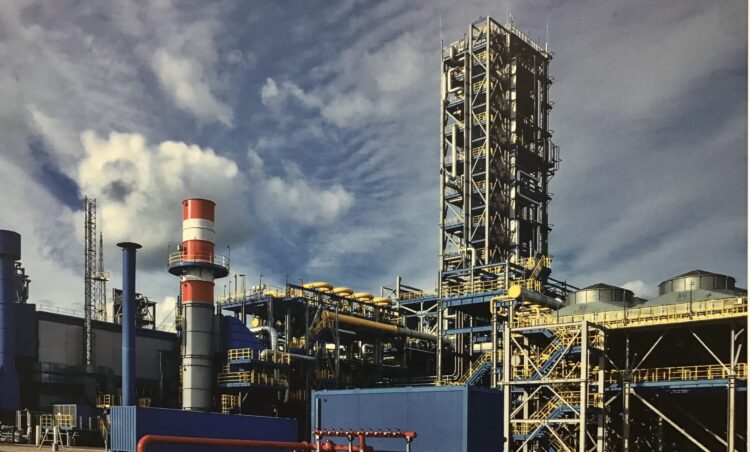

Gazprom, Russia’s energy company, on Friday said its 1.5 million tons capacity Liquefied Natural Gas (LNG) complex in Portovaya, St. Petersburg, Russia, was aimed at redefining the country’s energy security and safety.
The Chief Executive Officer of Gazprom LNG, Mr Stukov Anton, said this while receiving African journalists and energy experts on a tour of its facilities.
BRANDPOWER reports that the team was conducted round the LNG production, storage and shipment complex in Portovaya in the Vyborgsky District of the Leningrad Region, on the northeastern coast of the Gulf of Finland.
It is operated by Gazprom LNG Portovaya LLC, a wholly-owned subsidiary of Gazprom.
Mr Rustam Shafier, Process Engineer, Gazprom NLG, said the complex had a design capacity of 1.5 million tons of liquefied natural gas per annum, and that the plant, which was inaugurated in September 2022 marked its first one million tons of LNG production in May 2023.
“The complex includes core and auxiliary process equipment intended to receive, treat and liquefy feedstock gas, as well as store it in liquefied form for subsequent shipment to consumers.
“Russia’s Unified Gas Supply System delivers gas to the complex while it receives the required treatment in the plant’s units and is then sent for liquefaction.
“The produced LNG goes into a storage tank from where it is shipped to consumers by sea or by land.
“For offshore shipment, LNG is pumped from the onshore storage tank into the Portovy tank vessel via a cryogenic pipeline,” he said.
He added that the company’s ground storage facility had a capacity of 42,000 cubic metres, while 138,000 cubic metres could be stored in the its ship, and the entire production volume adequately catered for the country’s energy need and the needs of its clients.
According to him, the company’s LNG services the network of gas filling stations along the federal highways between Moscow and St. Petersburg: М-10 Russia and М-11 Neva.
He said one of the key equipment at the LNG plant was the Ladoga Gas Compressor Units (GCUs) produced at Nevsky Zavod in St. Petersburg.
“The Ladoga GCUs are designed to compress the multi-component cooling agent used in the natural gas liquefaction process,” he explained.
The team also visited the plant’s central control room powered with softwares made in Russia and a floating cryogenic storage pipeline of almost four kilometres, said to be one of the longest in the world.
The team had earlier visited the Bovanenkovskoye oil, gas and condensate facilities, comprising 18 fields, 770 Wells (700 in operation) with 57 clusters accounting for 20.4 trillion cubic metres of gas and one billion tons of gas condensate and oil per annum.
The Gazprom Bovanenkovskoye field is located in the Northwestern part of Yamal Peninsula, beyond the Arctic circle, spanning 1,780 square kilometres.
Gas production from the field is performed by three gas production facilities.
In Dec. 2021, for the first time since the inception of development operations, the annual gas production rate exceeded 100 billion cubic meters of gas.






















